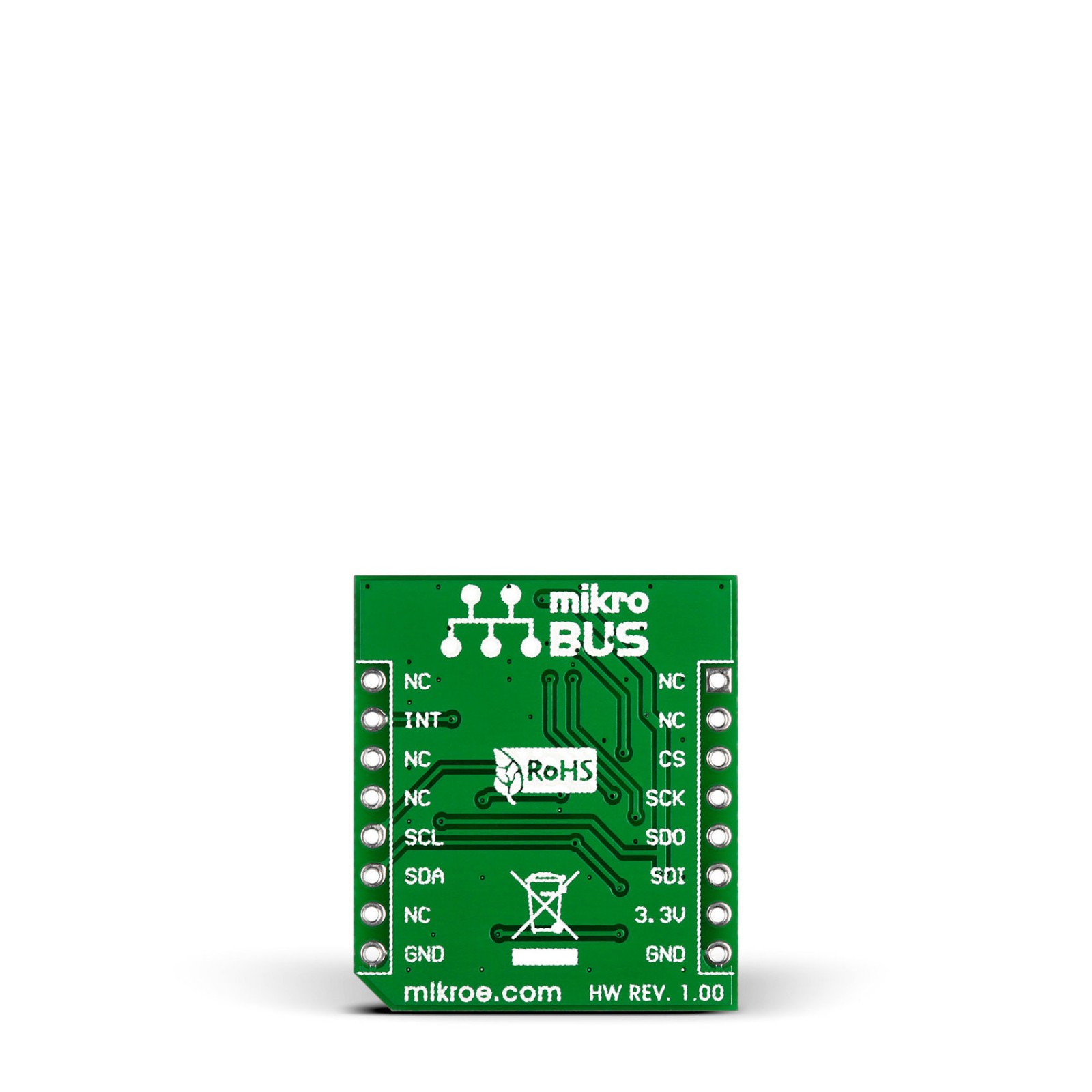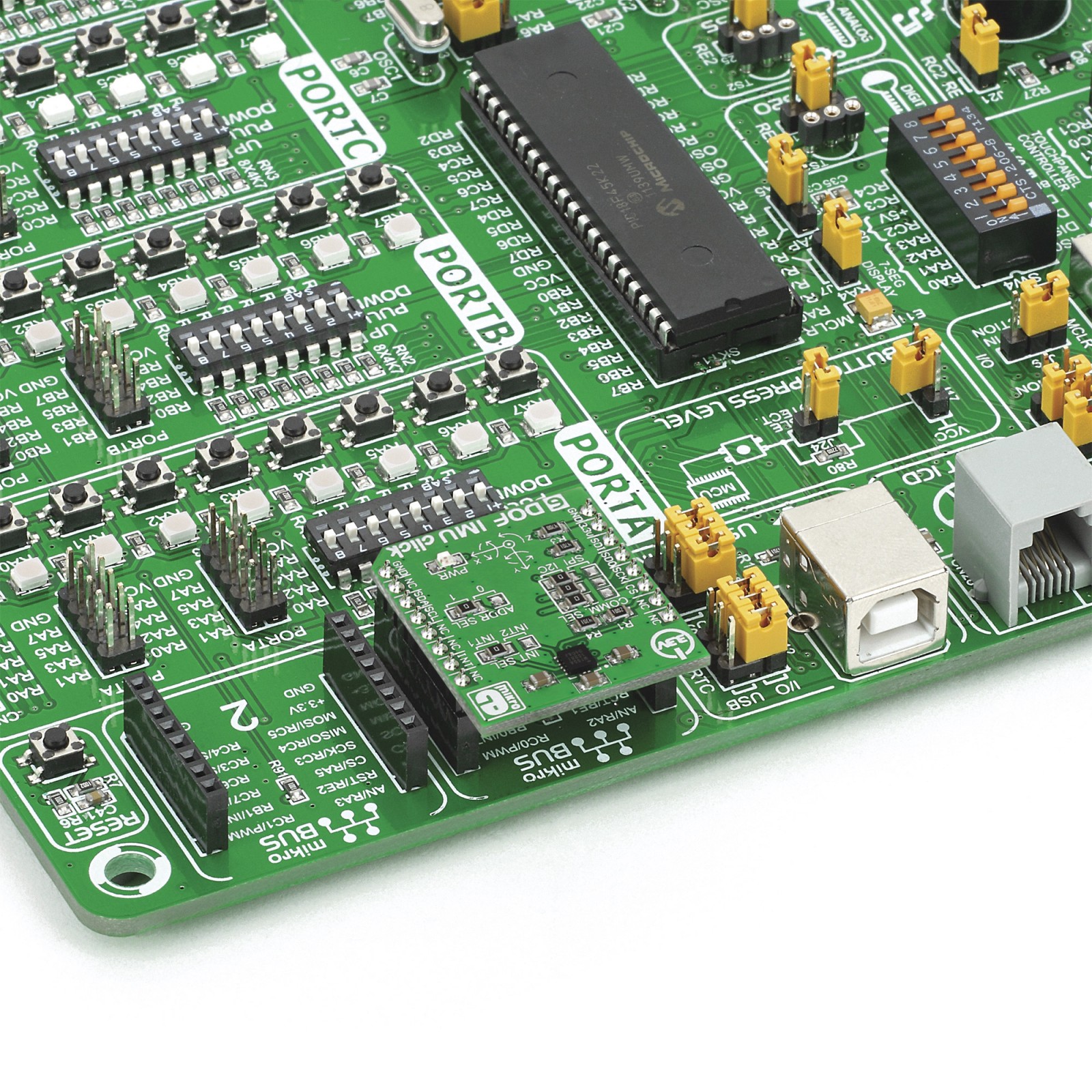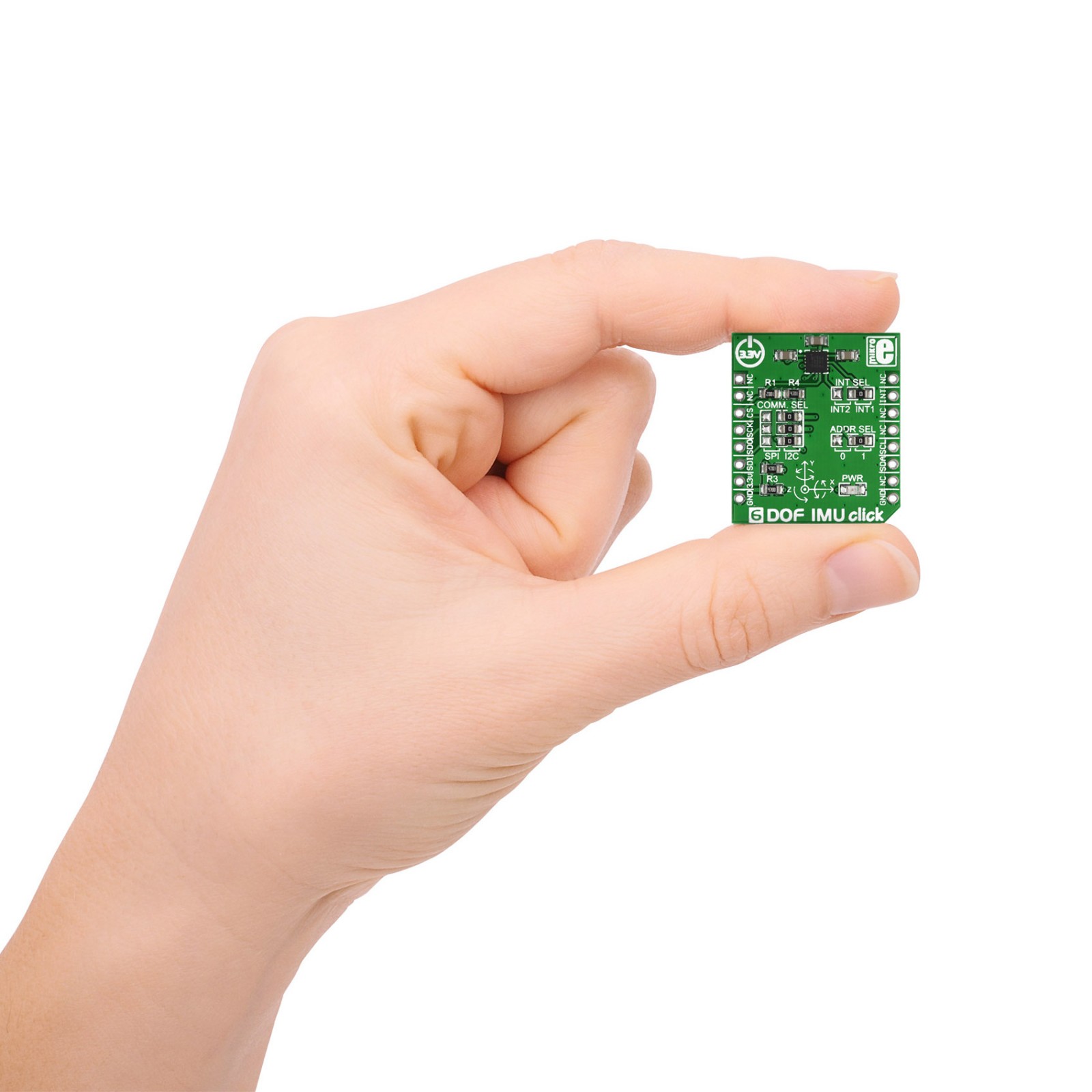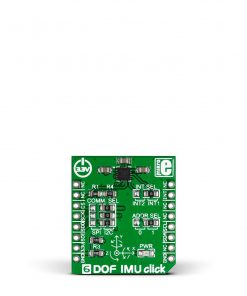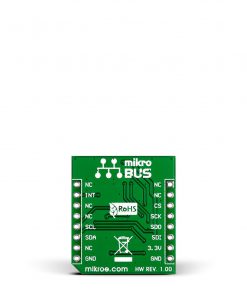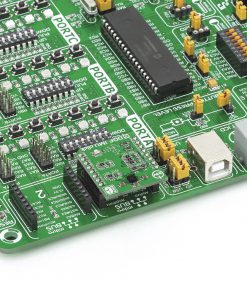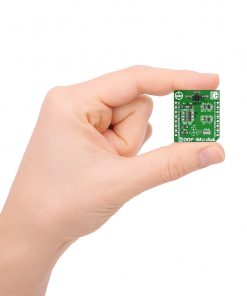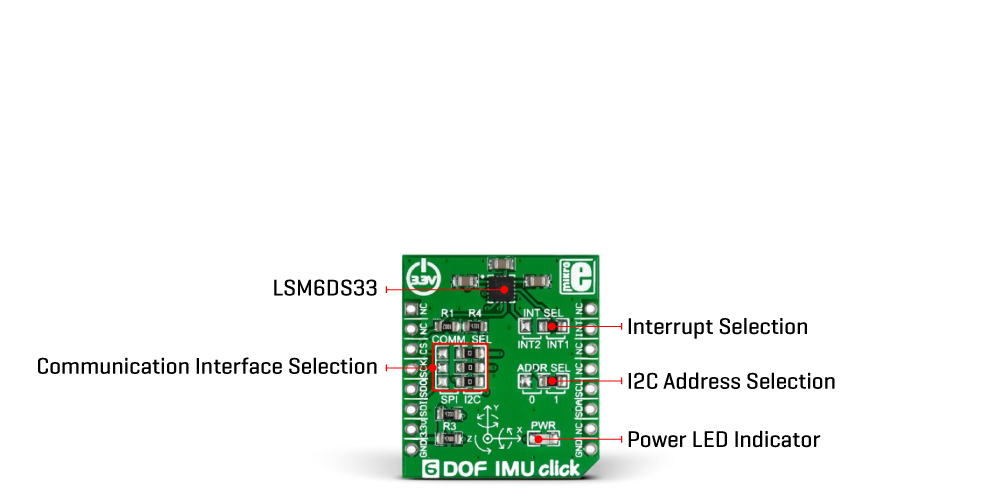6DOF IMU Click
R535.00 ex. VAT
6DOF IMU Click is a compact add-on board with a 6-axis motion tracking device combining a 3-axis gyroscope and a 3-axis accelerometer. This board features the LSM6DS33, a system-in-package featuring a 3D digital accelerometer and a 3D digital gyroscope from STMicroelectronics, performing in high-performance mode and enabling always-on low-power features for an optimal motion experience. It has a full-scale acceleration range of ±2/±4/±8/±16 g and an angular rate range of ±125/±250/±500/±1000/±2000dps, alongside a selectable communication interface with a data synchronization feature. This Click board™ represents an excellent choice for applications like tilt sensing, pedometer, 6D orientation and free-fall detection, tap/double-tap detection, indoor navigation, and many more.
6DOF IMU Click is supported by a mikroSDK compliant library, which includes functions that simplify software development. This Click board™ comes as a fully tested product, ready to be used on a system equipped with the mikroBUS™ socket.
Stock: Lead-time applicable.
| 5+ | R508.25 |
| 10+ | R481.50 |
| 15+ | R454.75 |
| 20+ | R437.63 |


